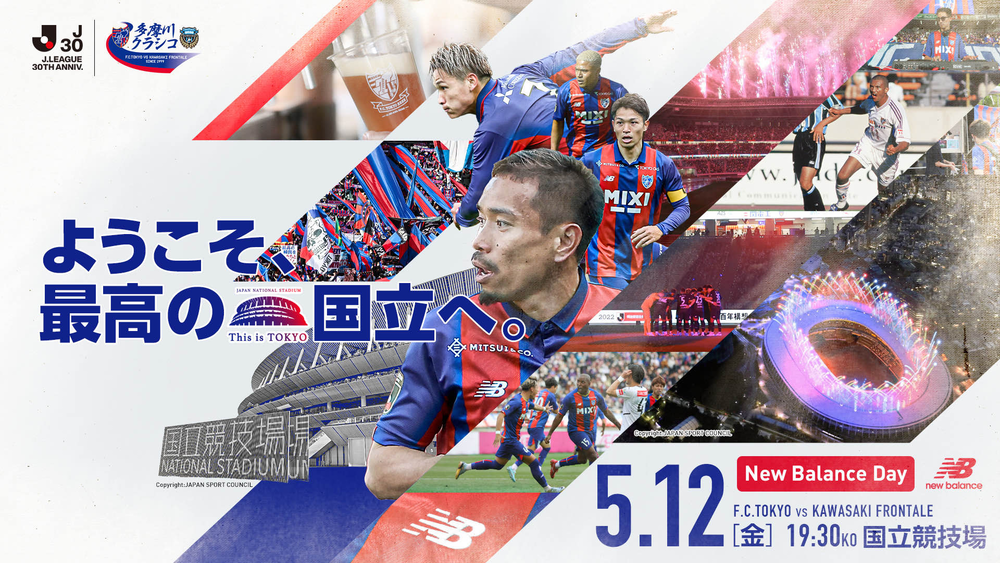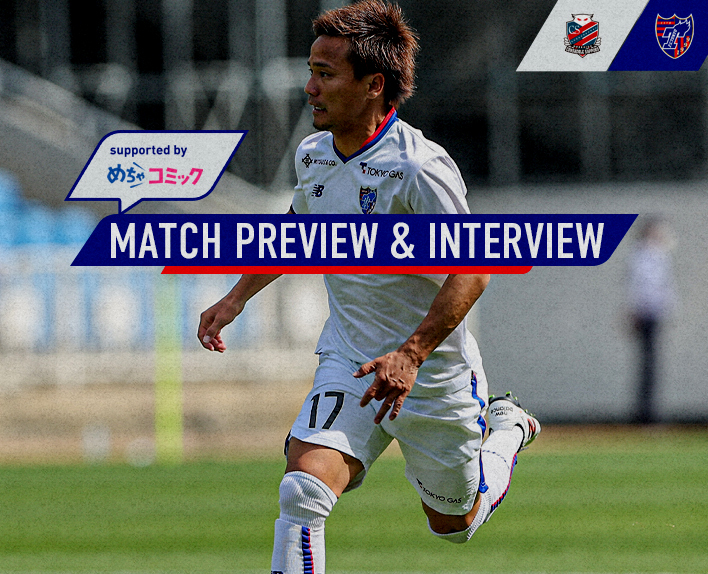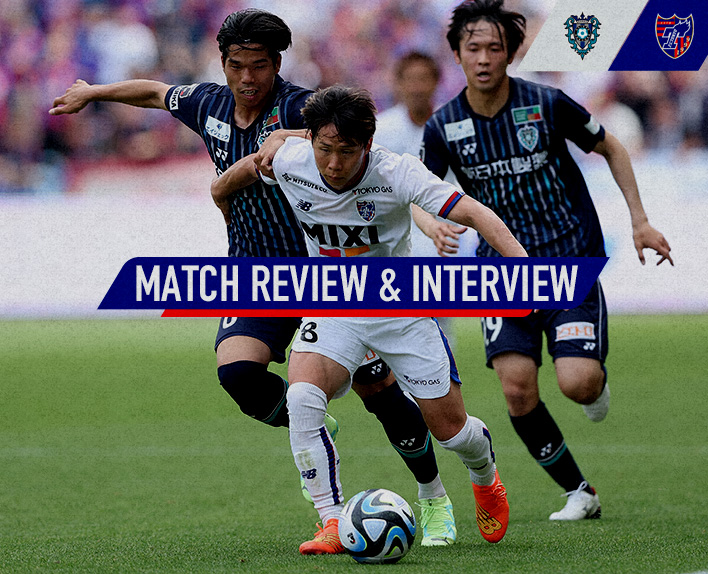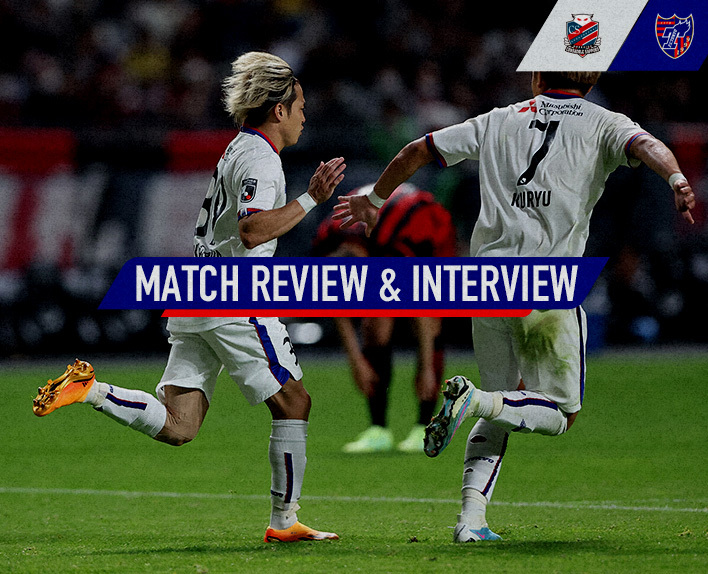※The MATCH PREVIEW & INTERVIEW for the Hokkaido Consadole Sapporo match on May 6 (Sat) will be on hiatus due to production schedule.
The next mechacomic will be the MATCH PREVIEW & INTERVIEW for the Kawasaki Frontale match on May 12 (Fri).
<Previous Match: Avispa FukuokaReview>
Is Fukuoka a difficult place for Tokyo? Although they won in the 2016 Levain Cup, they have not been able to win a single match since their first league match in Fukuoka in the 2000 season.
On this day as well, Avispa Fukuoka arrived in Fukuoka with a good streak of 2 consecutive league wins and 3 consecutive official wins, but ended up losing by one point. Furthermore, in the second half, they were unable to hold onto the ball or launch counterattacks against Avispa Fukuoka's strong start and solid defense, leaving many issues in terms of content.
However, it cannot be said that there were no chances to win throughout the 90 minutes. In the 19th minute of the first half, Ryoma WATANABE made a starting point on the right side and cut in the center with a combination with Teruhito NAKAGAWA, and took a shot that hit the post. Kuryu MATSUKI also created a scene where he broke through into the penalty area and was just one step away from scoring, showing a posture of approaching the goal by connecting individual ideas against the opponent who was pulling back.
Unfortunately, in the second half, the ball did not settle down and we were pushed back by the opponent's momentum in the battle for the ball, which prevented us from continuing the good flow we had in the first half. Even in the late stages of chasing the lead, we were unable to effectively put the ball into Fukuoka's side, as our crosses were too early and mostly ineffective in the opponent's territory.
Before talking about style, the fundamental principle of soccer is to fight and have a sense of challenge to win against the opponent in front of you. After a limited adjustment period of two days, the team will fly to the northern land.
<Preview>
For Tokyo, it is a consecutive battle fought in 3 days and 2 days, and also a grueling expedition involving long trips to Fukuoka and Hokkaido. On the other hand, for Hokkaido Consadole Sapporo, it is a match fought in the situation of consecutive home games despite having only 2 days of rest. The time required for preparation is equal, but considering factors such as travel, it is true that Sapporo has an advantage in terms of player's condition.
When considering Sapporo's soccer style, the difference in conditioning becomes a more worrying factor that hangs over Tokyo. In defense, they catch players in a man-to-man style and challenge duels with high intensity. In attack, they come flying into the Tokyo territory with momentum through coordinated passing and direct plays calculated from the goal.
To fight in two days, it can be said that it is a very tough and challenging opponent in terms of intensity and condition.
Both teams have an "attacking" orientation, but the meaning behind it is different. Tokyo wants to control the game and dominate both offense and defense, while Sapporo lines up players with momentum and is not afraid to engage in an open match. Their attitude of always going for the goal is reflected in their third place ranking with 20 goals.
On the other hand, defense is definitely a concern with 21 goals conceded, ranking third worst due to the increased focus on attack. For Tokyo, it is important to carefully assess Sapporo's approach and find spaces while neutralizing their attacking momentum, utilizing both quick and slow attacks to make precise choices towards the goal.
[Albert PUIG ORTONEDA Interview]

Q, the soccer styles of Avispa Fukuoka and Hokkaido Consadole Sapporo are quite different. How do you adapt?
A, Albirex Niigata, Fukuoka, and Sapporo will face off in this three-game series against teams with completely different styles. Sapporo has the characteristic of playing a high-intensity man-to-man defense. Taking that into consideration, we want to effectively utilize our weapons according to the situation. There is a possibility that spaces will open up, so I think it is important whether we can successfully exploit those opportunities.
Q: Are you considering placing more offensive players on the side, considering that a game requiring movement before and after is expected?
A, considering our style, we need a more attacking type of fullback. I think that should always be the case regardless of the opponent. However, we must cleverly judge who to use based on the characteristics of the existing players and the characteristics of the opposing team. However, as a clear trend, it can be said that fullbacks who participate in the attack create more decisive chances. I think the previous match against Fukuoka was a typical example where this was not the case.
Q: How do you want to connect the challenges of the Fukuoka match to the Sapporo.D match?
A, we were unable to create any decisive chances in the second half of the Fukuoka match. We also had many ball losses in the midfield. Our awareness of attacking the goal was also weak. The conceded goal was a result of our own mistake. We often lost in one-on-one situations. It was a tough 45 minutes. I also spoke to the players that we cannot continue playing like that.
Q: In the pursuit of an attacking style of football, there were several matches this season that ended with no goals scored. How do you perceive the fact that the Fukuoka match also ended with no goals?
A, I am focusing on whether I can score goals and how many decisive chances I can create. I don't care about the number of shots because it is doubtful whether any of them have the potential to be a goal. What I value is the number of decisive chances. There have been several matches this season where the number of decisive chances was low. I consider it an important challenge. On the other hand, I generally believe that if I can create multiple decisive chances, there is a high possibility of winning the match, and I am focusing on that. Regarding the second half of the Fukuoka match, the midfield was unable to dominate the game, and as a result, the fullbacks were unable to participate in the attack. I think that was also a factor in not being able to create many decisive chances.
Q: How do you feel about the depth of the side-back position with the absence of player Hotaka NAKAMURA due to injury?
A, in modern soccer style, it has become increasingly difficult to discover high-quality right backs who can perform on a global stage over the past few years. While there are talents available for left backs, there seems to be a trend of not producing good candidates for right backs. Players in the right back position are required to have high abilities in both defense and attack, to take positions centrally, and to possess tactical intelligence, which is essential in modern soccer. At FC Barcelona's academy, they have utilized wingers as full-backs and defensive midfielders as center-backs to incorporate more attacking players into the defensive line. Do you know what position Jordi Alba played until he was around 20 years old? He was utilized in a second-line position, similar to Ryoma Watanabe. If a team needs technically skilled players in the defensive line, FC Barcelona's academy has practiced using players who played in the forward positions when they were younger. I believe Kashif BANGNAGANDE is also a player who can play as a winger without any issues. I think modern soccer is looking for such right backs.
Q: There were moments in the first half of the Fukuoka match where the training content was utilized. This was evident in Ryoma WATANABE's shot and also in Kuryu MATSUKI's similar scene. Can we see the accumulation of such moments?
A, there is still room for improvement in that area. As I mentioned earlier, I am not concerned about the number of shots, and I question whether it should be interpreted as an important statistic. What matters is whether it was a chance that had the potential to lead to a goal. Remember the match against Kashiwa Reysol. There was a moment when Diego OLIVEIRA was clearly in a free position and should have pushed the ball into the goal, but he missed and it went wide. That is counted as a missed shot and interpreted as a clear chance in terms of numbers, while on the other hand, if a long shot from nearly 30 meters with low probability is taken and caught by the goalkeeper, it is counted as a shot on target. In that sense, I am not concerned about the numbers of shots on target or off target. The same goes for possession rate. It is not the overall possession rate that is important, but rather in which zones the possession was held. Various statistics are analyzed, but none of them lead to accurate interpretations.
[Player Interview]
<Shuhei TOKUMOTO>
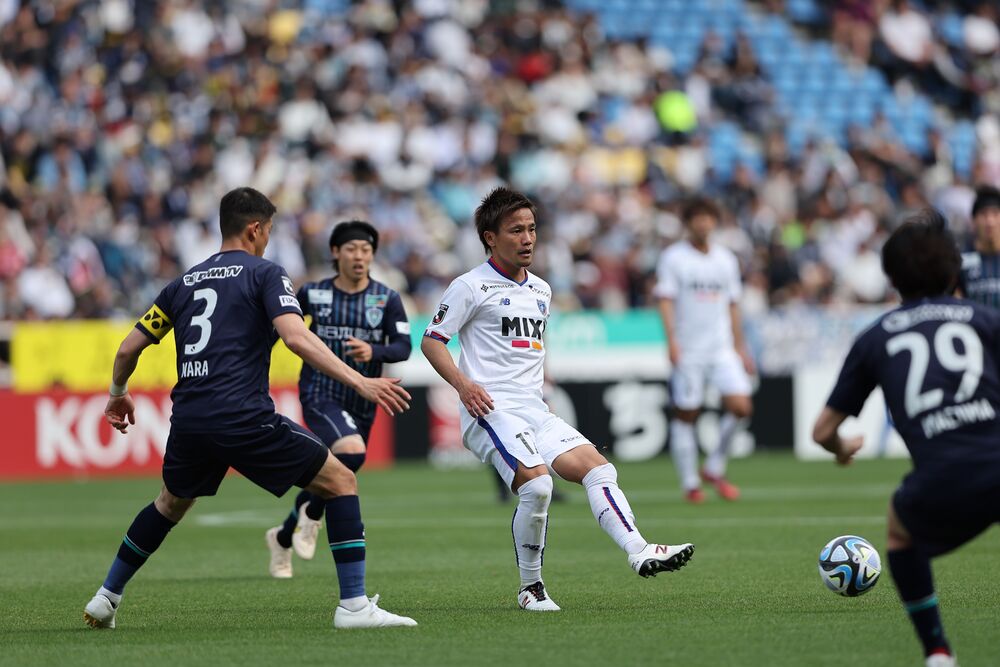
Q: How is your condition with the tough schedule of consecutive matches?
A, I haven't played the full 90 minutes in both matches, but my body is moving and even if I have to move to the west or north, I want to show that we can win. In the match against Avispa Fukuoka, I ended up making the fans and supporters sad, so we are well prepared to be able to celebrate together firmly on the northern land.
Q, Fukuoka will be a different opponent in terms of style.
A, I think we can penetrate into the goal area by expressing various ideas because we have many players who can play in a fluid position. I would like everyone to have a more positive awareness of shooting, and I think that will lead to goals whether it goes directly in or through a second ball, so I want to align our direction and continue.
Q: Looking at just the number of shots in the Fukuoka match, would you say that the offense is a challenge?
A, Sanfrecce Hiroshima and Albirex Niigata's match also had a low number of shots, but they were able to score and win. If we couldn't do that in the Fukuoka match, it's inevitable that people around us will say something. I also took shots in the Shonan Bellmare match, but someone needs to create an opportunity to increase the number of shots. So, I want to continue doing what I can do.
Q: When moving the ball, do you think it is possible to change the trajectory with the tip of your foot? Has there been an increase in such plays in J1 where players have become more comfortable with it?
A, I think I can cancel the play because I can see it. I don't think I'm the type of player who aggressively attacks like Kashif BANGNAGANDE. I think it's because I have confidence in my technical skills that I have honed at FC Ryukyu and Fagiano Okayama, and I can see the surroundings. I'm not sure if it's because I've gotten used to it, but I think that's my strength.
Q, the side back and the central player are merging without separating, and the position interchange is becoming smoother. How much do you feel you have achieved in terms of the ideal form?
A, I think it's about quality from now on. The more you think about the ideal, the more there is, but if we can increase the number of times we can go to the goal by having a good combination and quality rotation, I think it will lead to what Coach Albert wants to do and I think it will lead to victory and goals. I wonder if I'm growing every game.
Q: Ryoma WATANABE is a player who I feel is quite suitable for the style of football that Coach Albert PUIG ORTONEDA wants to play. The combination there is smooth, and player Tokumoto himself also feels that he is suitable for the current style. What do you think?
A, I don't think I'm as good as Watanabe in terms of skill, so I carefully judge the situation and look at my surroundings, which is why I think we have good chemistry and can play well together. When I played against Niigata, which was coached by Albert in the season before last, I felt like "I can make it work if I play here," and last season I watched a lot of Tokyo's games and had a desire to play Albert's style of soccer. The training I did with that in mind is paying off now. I still haven't become the kind of player that makes you want to use me, so I want to continue working hard in practice with a positive mindset.
Q, I feel that when Tokumoto player is substituted and communicates with everyone on the pitch, it becomes a lubricant.
A, I can only support, so I was really frustrated when we conceded after I was substituted. Since I can't do anything after being substituted, I have a feeling of relying on others. It was a substitution where an experienced player came in, and I intended to pass on the remaining power to them.
Q: There were also words that you had confidence in playing in J1 when you first joined, but now that you have more playing opportunities, is there anything that you have come to see again?
A, I understood that I am not the type to do something alone, and that my strengths come out when I play with skilled players. I have had more opportunities to play with Watanabe and have learned from watching the play of Nagatomo Yuto and Yoshifu Kashiwa, which has helped me find my position to bring out Watanabe's skills. I believe that I have reached where I am now because of that. I think I have to do it with confidence. I am doing it with a mental attitude that I don't care even if I am criticized.
Q, do you have anything you are looking ahead to?
A, I think players who don't get injured are valuable within the team, so I do stretching and take care of myself. Also, I think I can't surpass player Stojisic unless I become a member of the Japan national team, and I don't think there is a starting position for me in Tokyo. So, I want to compete and improve myself. When player Stojisic is on the field, I think I can learn from him, and when I am on the field, I have the feeling that I can do it, so I think we have a good relationship.
Q: Earlier, there was a discussion about quality. What are the important things for the team and individuals to improve quality?
A, I think it's communication. I think it will be better if various players can speak their minds regardless of age. Also, it depends on the soccer skills, whether each individual can focus on the quality of a single pass from practice. We are able to practice daily to make it permeate, and I want to show it in the game.
Q: Are there more goals in good shape, and are the team starting to draw the same picture?
AI think it's the skill and choice of the player to be able to take it to the point of whether to decide or not to decide at the end. The scenes where everyone draws the same picture and scores are increasing, so I want to continue that.
Q, please tell us once again about your enthusiasm for the Hokkaido Consadole Sapporo match.
A, it's an opponent that comes at you one-on-one, so if we can't compete in the individual battles, we can't win. We want to thoroughly focus on not losing in the battle, taking advantage of the lessons learned from the Fukuoka match. After that, we have a game coming up at the magnificent Japan National Stadium, so we want to win and come back with the fans and supporters.
